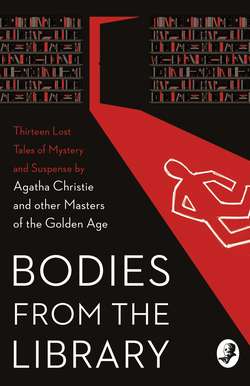Читать книгу Bodies from the Library: Lost Tales of Mystery and Suspense by Agatha Christie and other Masters of the Golden Age - Агата Кристи, Georgette Heyer, Agatha Christie - Страница 7
J. J. CONNINGTON
ОглавлениеAlfred Walter Stewart, alias J. J. Connington, was born in Glasgow in 1880. A clever child with an enquiring mind, he attended Glasgow High School and graduated in 1902 from Glasgow University with honours in chemistry, mathematics and geology. While Stewart could have pursued almost any of the sciences he decided to focus on chemistry. After completing his doctorate in 1907, he took up an appointment at Belfast University where in 1919, after spells working for the Admiralty and lecturing at the universities of London and Glasgow, he became Professor of Chemistry, occupying this chair until his retirement in 1944. He had been suffering for many years from a debilitating illness, and he died in 1947.
Stewart had begun writing novels in the 1920s, adopting the pseudonym J. J. Connington doubtless to distance what he saw as a hobby from his academic career. His first book, Nordenholt’s Millions (1923), dealt with a Wellesian apocalypse, brought about by scientific error and ended—in the Clyde valley—by scientific genius. His second, Almighty Gold (1924), was a more prosaic tale of adventure and crime in the world of high finance. Both books sold well, and were well received critically, but this was the 1920s and what John Dickson Carr would later describe as ‘the lure of detective fiction’ was too great. For his first detective story, Death at Swaythling Court (1926), Stewart wrote an entertaining village mystery in which a blackmailing butterfly collector is poisoned and stabbed. This was quickly followed by The Dangerfield Talisman (1926), an ‘old dark house’ mystery with many characters and almost as many clues.
For Murder in the Maze (1927), Stewart created his first recurring character, Sir Clinton Driffield, an atypically misanthropic policeman who would appear in seventeen novel-length mysteries. Driffield is generally aided, and sometimes hindered, by his Watsonian friend Squire Wendover, a local landowner in the county where Driffield is the chief constable. Driffield is a far more active chief constable than is customary in fiction—or in real life—and, while he can tend to be didactic, he is one of only a handful of detectives in the Golden Age willing to admit, occasionally, that he is unable to explain every aspect of a case. And Driffield can also proceed in unorthodox ways, never more so than in the extraordinary Nemesis at Raynham Parva (1929).
As might be expected from a scientist, Stewart’s mysteries are careful and methodically written and, while some contemporary critics felt the author could sometimes be long-winded, the majority found him adept at constructing ingenious plots, entertaining and imaginative, and above all scrupulous at playing fair with the reader. His novels often feature memorable elements, such as the sinister legend of the Green Devil in Death at Swaythling Court, the hedge maze of Murder in the Maze, the lottery tontine of The Sweepstake Murders (1931) or the ‘fairy houses’ and weaponry museum in Tragedy at Ravensthorpe (1927).
‘Before Insulin’, the only short story to feature Driffield and Wendover, was first published in the London Evening Standard on 1 September 1936 as the final story in Detective Cavalcade, a series of stories selected by Dorothy L. Sayers.
